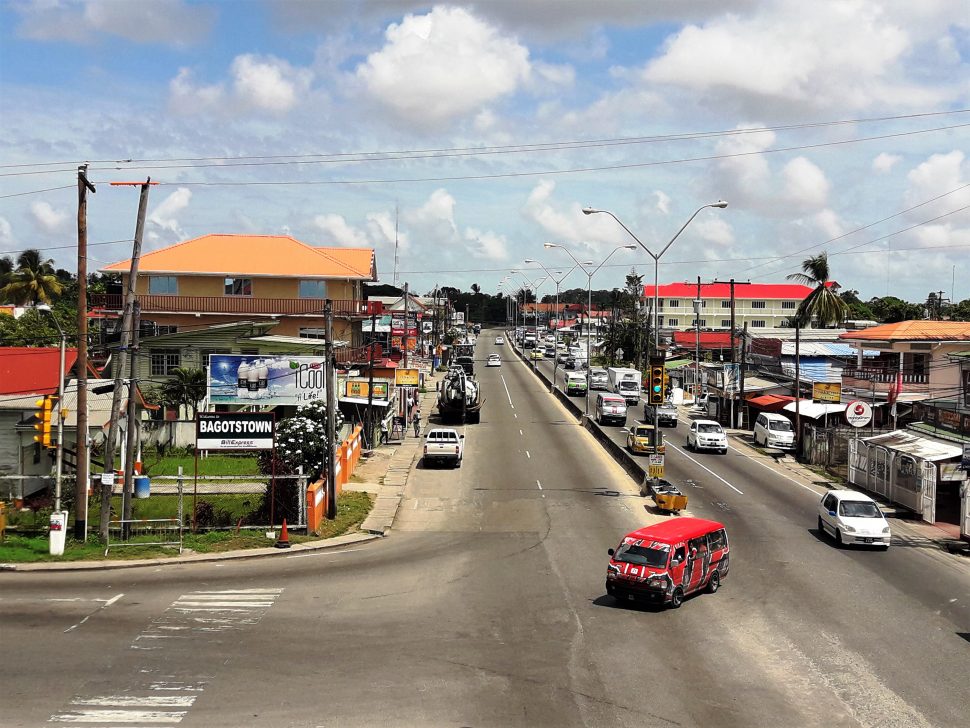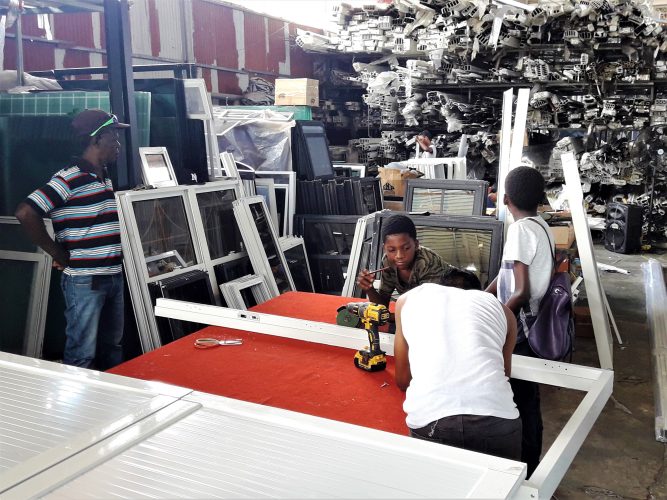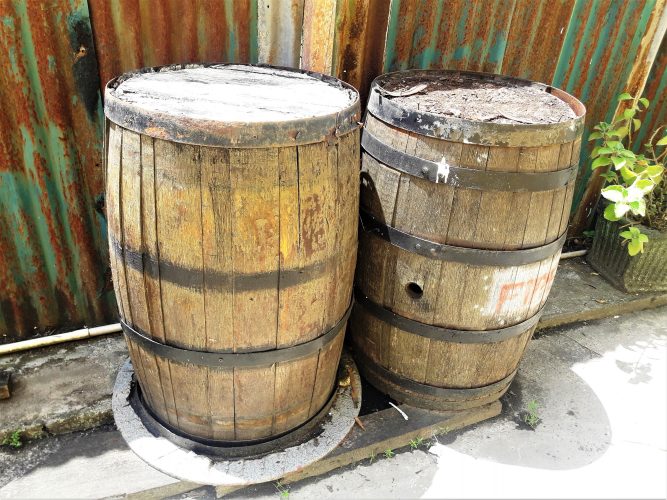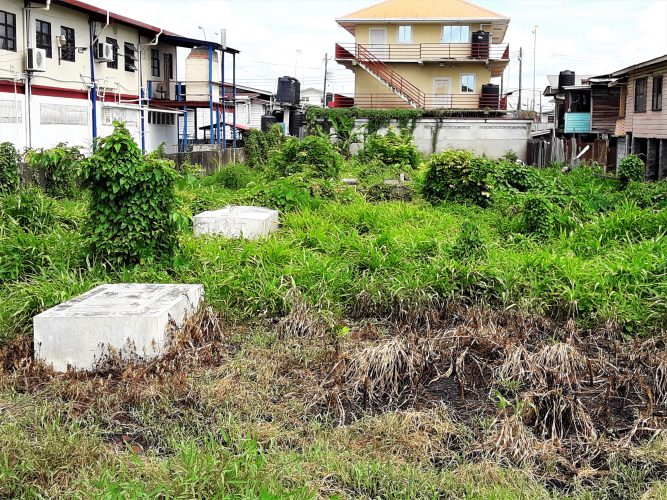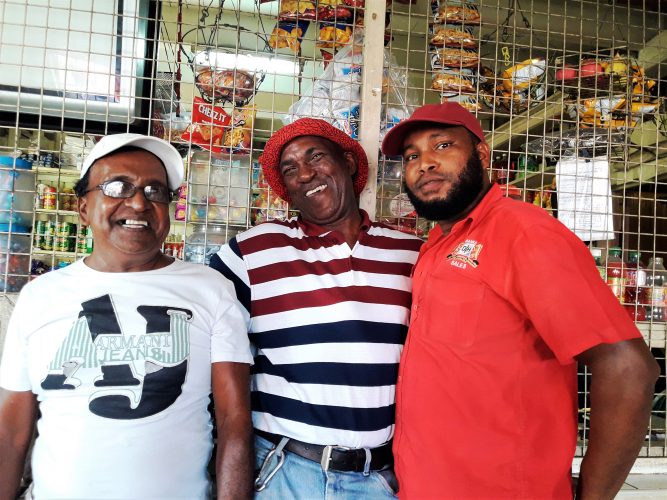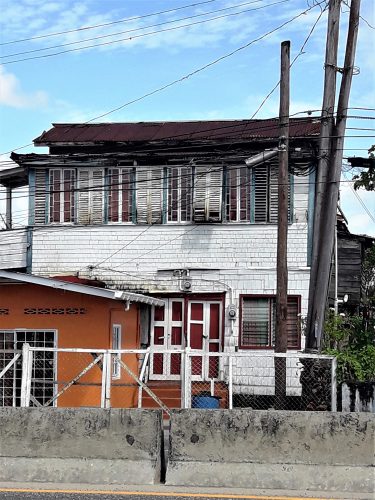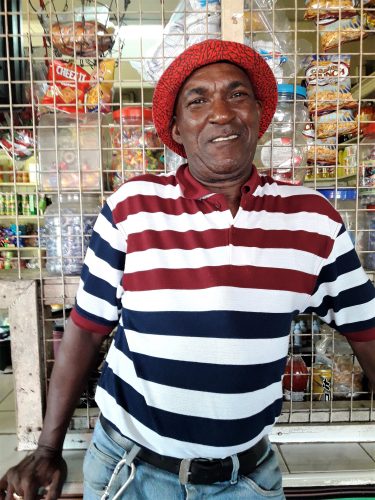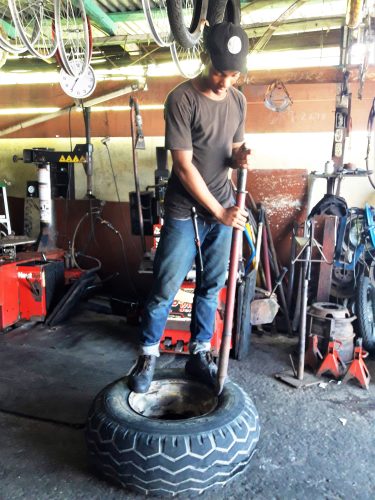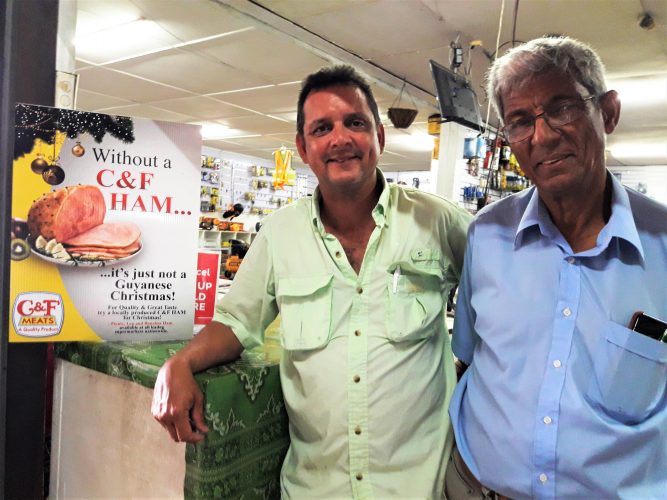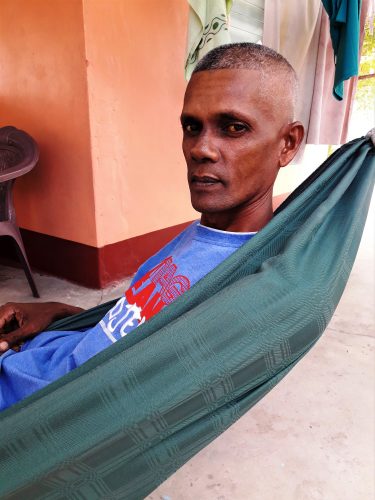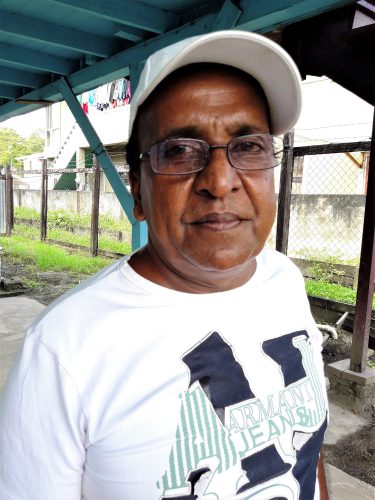Bagotstown is a thriving village, though a few of its residents consider it to be one of the smallest on the East Bank Demerara. Many of the villagers in this well-populated, multi-cultural community migrated to it from various parts of Guyana.
Douglas Braithwaite happily tended to an ongoing flow of customers engaging in small talk with them. A native of the village, he was born before the construction of the Demerara Harbour Bridge, situated a stone’s throw away from him.
“Before the Harbour Bridge, Bagotstown was a quiet village. The bridge was [under construction] when I was a teenager. At the time I was attending Central High then I finished and left to join the National Service. When I return I was employed with the Harbour Bridge from 1977 to 2004; I worked most of my life with the bridge company,” Braithwaite said.
He shared that prior to the bridge there was a koker where persons came by boat to ply their trade of woven baskets. The Demerara River was the highlight of his life before the bridge existed. According to the man, one couldn’t have a river in his backyard and not know to swim. “….Man I get blows all for swimming in the river,” he recalled.
There was excitement when the bridge was completed in 1978 and Braithwaite, along with many others took the opportunity to explore the West Bank and West Coast for the first time. The vehicles that plied the Harbour Bridge route then were the Morris Oxford and Vauxhall cars along with large wooden buses. The cars, he said, paid a $20 toll fee to cross the bridge. At the same time, he was working for $5.96 a day.
Vehicles that once had to take the ferry across the Demerara River from Vreed-en-Hoop to Georgetown had an easier way of reaching the city with the construction of the bridge and businesses shot up in Bagotstown. However, Braithwaite did not open his business until 2005 after his retirement the previous year. Today, Bagotstown has supermarkets, car marts, tyre shops, three hydraulic shops, a Western Union Outlet, ATMs, internet cafes, insurance company, barber shops, a water company, and boutiques among other businesses.
Equipped with a rake, Eugene Daniels moved the leaves in her backyard. Her face, beaded with perspiration, lit up in a smile; the dog at her side was nowhere next to happy and bit at the fence as if to get it out of the way.
She was born at La Harmonie on the West Bank Demerara. Before the bridge was built, Daniels’s parents would boat to the koker and sell their ‘mucroos’ (woven baskets). Daniels and her family moved to live in Bagotstown after the bridge was built. With so many business entities, she noted, the way of life differed by far when compared to La Harmonie. Life for her became easier with the many conveniences nearby.
Shaeed Salim sat at the shop situated at the junction of Water and Barnwell streets, chatting with a longtime friend of his. Salim was born in Bagotstown in 1958; he was delivered by a midwife. He lives in Water Street. The other two main streets in the village are Barnwell and Norton; the latter was the first street to be made of concrete on the East Bank. Nurses working at the sugar estate, he said, were given the priority of buying large plots of land for a dollar. The plot he lives on was purchased by a nurse who later allowed the authorities to insert an alley leading to Barnwell Street. The alley was called Water Street, and Salim shared that it lives up to its name when it rains.
“Bagotstown is one of the smallest villages on the East Bank,” Salim said. “The Chinese were the first business people to open business here. They had also opened a Chinese laundromat. The Chinese were the first to have a burial ground here also. The village though had a lot of Muslims who had invested in building a wooden apartment. In my days, Nandy Park and Republic Park were all canefields. We used to go and swim in the aqueduct then we’d pick cane and eat.” He, like Braithwaite, swam in the Demerara River and he said that even after the bridge was built, he would jump from the bridge into the river.
He said that a few of the early families are the Salims, the Harripersauds, the Khans, the Davises and the Gossais. “Where the present mall is was the land on which the colonist manager once resided. Later it was rented to an American Company called Amelico. They came here to upgrade the entire East Bank system by building new overhead water tanks. This was in the 1970s up to 1976. The building was later converted to a Jesus Rescue Mission helping children on the street, this went on for 15 years. Presently the mall is owned by Peter Fraser from the C&F chain,” he said.
Many years ago Bagotstown had two recreational halls: the Gatha Place and the Wickham Place where the famous string bands like the Mischievous Guys, Cannonball and Sid the Slickers played on weekends.
Sharing a bit on himself, Salim said that he once attended Teacher Welcome’s Nursery School then St Theresa’s Anglican School which is now Peter’s Hall Primary. He went on to Central High School then the Government Technical Institute. He later got into civil engineering then did a bit of trading before going to work in the gold mines. Some years later, he left the mines to work in the Accounts Department at the Joe Vieira Mining Enterprise and finally at Demerara Distillers Limited where he stayed for 23 as a lab technician until his retirement.
Bagotstonians, he noted, have always been friendly and hospitable people, free of discrimination, who live as one family. In his early days, Salim shared, he and the other boys of his time were always taken up with various sports activities and now he wishes that the youths of today can be actively involved in the same. He pleads with the relevant authorities to take on the project of building a community centre for Bagots-town. Salim insists also that Water Street be upgraded from its current condition and be concreted.
At another house Rajendra Chanderdeo relaxed in his hammock. He was born and raised in Bagotstown and his father before him. His grandparents moved to the village decades ago though he was not sure from where.
“As a boy growing up then was hard since my mother had left us and we [he and two sisters] were raised by my father and grandmother. But yet those were the best days for children to grow up in. We were taken up playing football, cricket, swimming, playing sal-out and dog and the bone and hide and seek. Children today don’t know about this kind of fun. In those days when we behave bad somewhere, neighbours would beat you and then you go home and you get more when your parents find out. Try and do that with children today and you got their parents to deal with or the police. We used to go climbing trees and picking mangoes but now you do that and the first thing people holla is ‘thief’,” he said.
Because his family struggled to get by, he was unable to attend high school and by 16 had signed up to learn auto bodywork but later lost interest in it and began working at the Demerara Oxygen Company as a porter. Later, he became a driver for the company.
Chanderdeo shared that though Bagotstown is not as homey as it used to be since many of the original residents have migrated or died, it is still a nice place to live in and the best part is having so many business entities around, so that he can practically get anything he wants. All he begs now is that officials pay more interest in drainage. “All these used to be drains; now they are just gutters,” he said.
